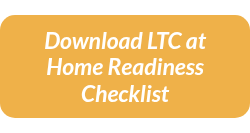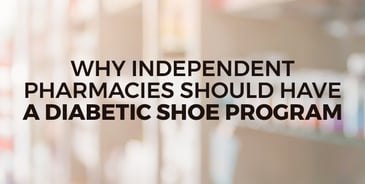
Long Term Care at Home Compliance Program
Help your patients stay home and get paid for the care you're already providing
You're Already Doing the Work! Coordinating with caregivers. Delivering meds. Offering compliance packaging. Providing monthly refills and clinical support. If you’re doing all this for home-bound Medicare patients, you’re already offering Long Term Care at Home services. The difference? You’re not getting reimbursed like you should!
The R.J. Hedges’ LTC at Home Compliance Program helps independent pharmacies get enrolled and get paid for the services they’re already delivering.
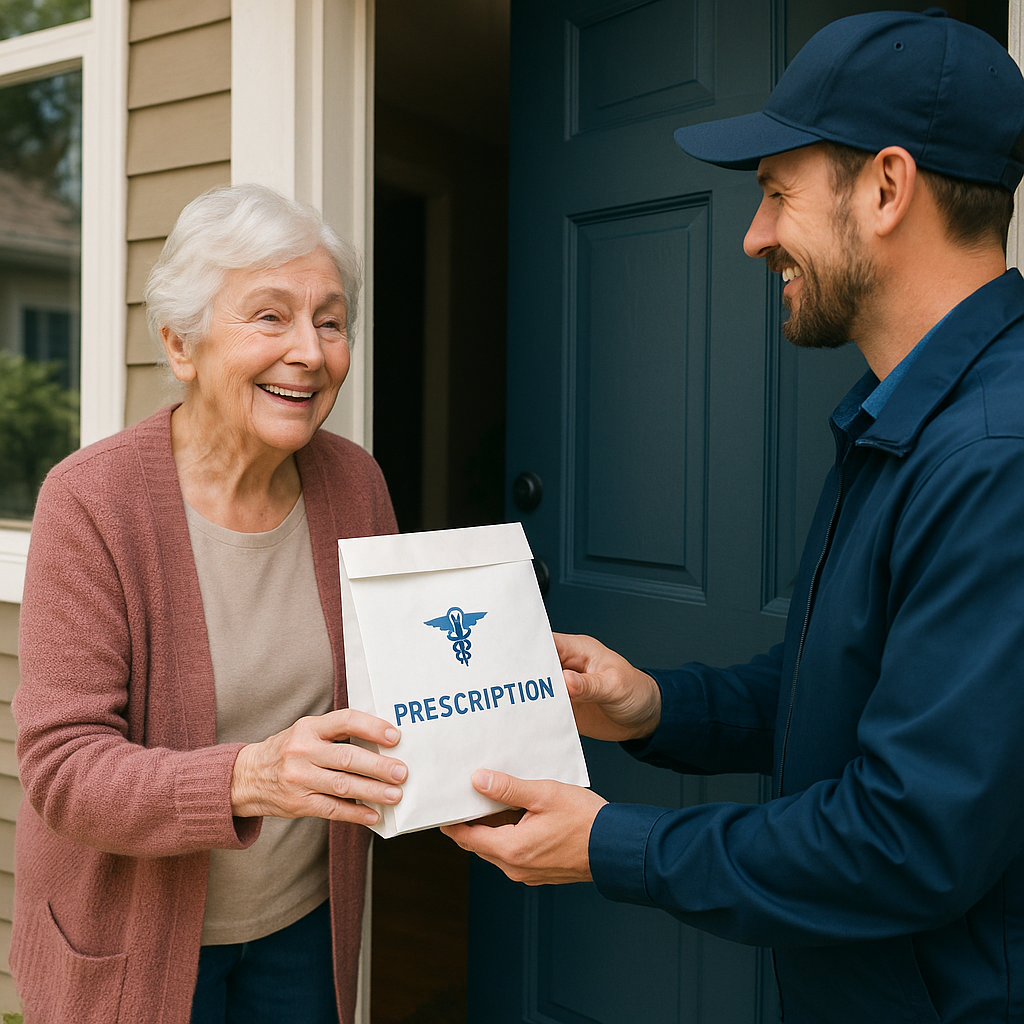
What is Long Term Care at Home?
LTC at Home is a Medicare-supported model that lets pharmacies bill LTC-level dispensing fees for home-based patients who require the same level of medication support as facility residents.
To qualify, pharmacies must meet CMS and PBM standards for LTC care, including proper documentation and service-level delivery.
We provide the tools, policies, and documentation framework to help you qualify, stay compliant, and unlock higher reimbursements without slowing down your workflow.

Did you know...
- By 2030, 1 in 5 Americans will be 65-plus.
- 87% of seniors want to age at home, not in assisted living communities.
- The home health market is projected to grow at a 7.5% annual rate between 2023 and 2030
- Over 66 million Americans receive health coverage through Medicare. That's more than one in five U.S. adults!
- Nearly 70% of today’s 65-year-olds are expected to require some form of long-term care during their remaining years, most of it provided at home.
- A 2024 projection shows that 17.5% of the U.S. population is age 65 or older, and nearly 90% of seniors prefer to age in place, staying in their own homes rather than institutional settings.
- As of mid-2024, over 6 million Americans receive paid long-term services and supports in home and community settings, compared to more than 2 million in facilities.
- Among long‑term care needs, 70% of older adults receive care solely from unpaid family caregivers, driving the need for Long Term Care at Home Pharmacy Services
Why These Stats Matter for LTC at Home?
The vast majority of long-term care, even within the Medicare and Medicaid population, is already happening at home AND it looks like that trend will continue. Increased population, Increased need, Increased number of seniors want to stay at home. For pharmacies, this creates a clear opportunity:
-
Prescription drug support is a crucial part of enabling safe, compliant home-based care.
-
Independent and regional pharmacies with existing home delivery, adherence packaging, and community presence are ideally positioned to operationalize LTC at Home programs.
- Now is a great time to start pivoting so you can meet the demand while earning a higher reimbursement.
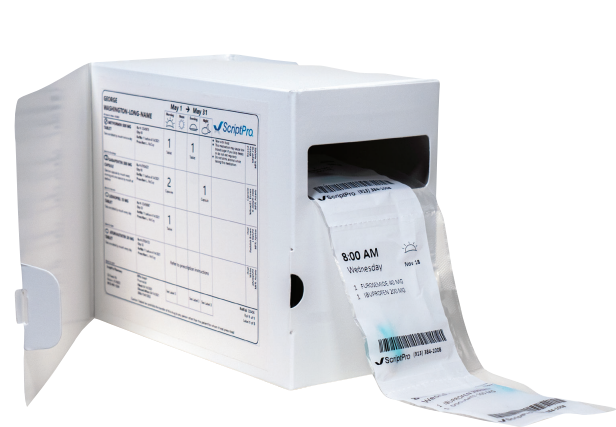
Can I start billing right away or do I need to do some prep work?
There is a bit of leg work your pharmacy will need to do to prepare.
Your Pharmacy Must:
- Secure a separate NPI & NCPDP
- Notify billing & payors
- Have required services established and available
Additionally, CMS has provided guidance through their "Long Term Care Guidance" published in March 2005- yes this is the most updated version! This lists has 10 specific requirements that plans are obligated to provide for residents of LTC facilities, and also apply to those offering Long Term Care Pharmacy at Home services. You must have all these requirements in place. *There are 2 that are state specific. You don't have to have all these services in your pharmacy, but you do need to have access to them. For instance, IV Medications- you can do this in house if you do Sterile Compounding, or contract to another pharmacy. Not all pharmacies have a live Pharmacist On-call and available 24-7. You can utilize a phone service forwarding to one of your staff pharmacist to satisfy this requirement.
- Comprehensive Inventory and Inventory Capacity
- Pharmacy Operations and Prescription Orders
- Special Packaging
- IV Medications
- Compounding /Alternative Forms of Drug Composition
- Pharmacist On-call Service
- Delivery Service
- Emergency Boxes*
- Emergency Log Books*
- Miscellaneous Reports, Forms and Prescription Ordering Supplies
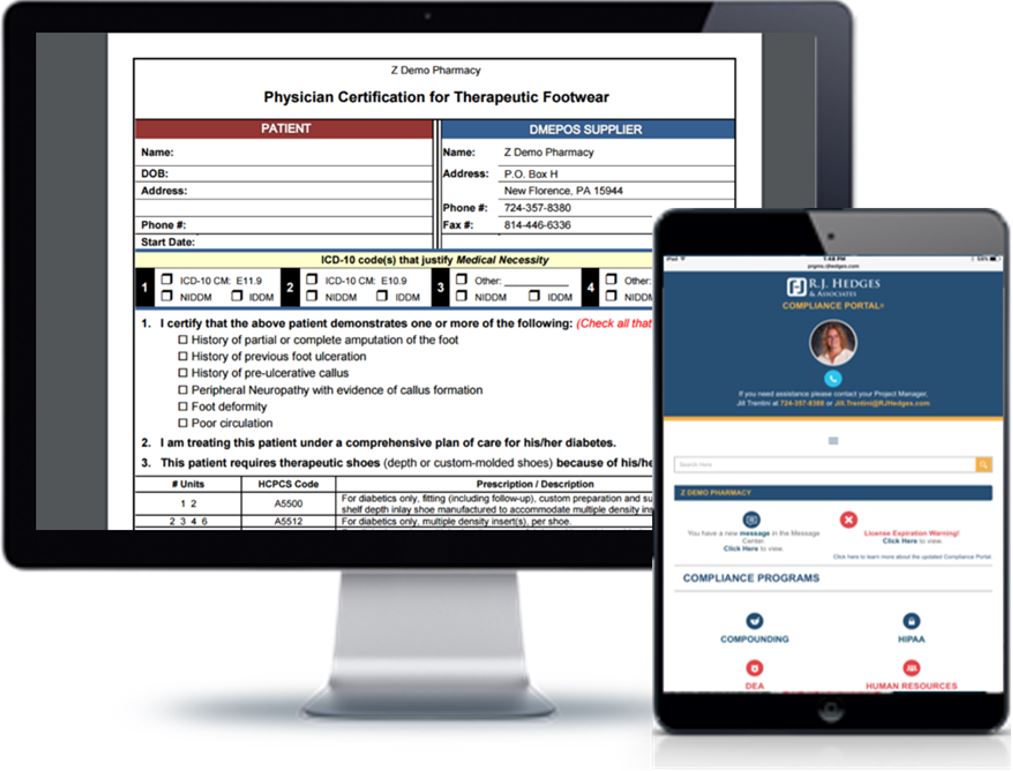
What’s Included in the Program?
- LTC at Home policy & procedures (CMS-aligned and peer-reviewed)
- Delivery protocols and vehicle safety forms
- Documentation tools: eligibility worksheet, implementation checklist and audit checklists
- Ongoing updates and web-based access via the R.J. Hedges Compliance Portal
Pricing
Flat Fee: $600 per year
- No extra setup fees
- No per-patient billing
- No long sales process
- Group pricing available upon request.
LTC at Home FAQs
- How did the “Medical at Home” designation originate?
- Does my pharmacy need a separate NCPDP number to bill LTC at Home services?
- Do I need a separate NPI for billing LTC at Home services?
- Do I need a second DEA license to dispense to LTC at Home patients?
- What codes do I use to bill for LTC at Home services?
- Do I need to notify payers before I start billing LTC at Home?
- Do I need to notify my state board of pharmacy?
- Do I need accreditation to bill for LTC at Home?
- How soon can I start billing LTC at Home services?
- What documentation should I keep for LTC at Home patients?
- What if I serve both LTC at Home and traditional LTC patients?
-
Short Answer: NCPDP introduced the Medical at Home billing designation in 2015.
Long Answer: In November 2015, the National Council for Prescription Drug Programs (NCPDP) approved DERF 1306, creating a new Level of Service code for 'Medical at Home.' This designation was intended for pharmacies providing LTC-equivalent services to patients residing in the home setting. The official code '7' for Medical at Home was added to the external code list in October 2017.
The designation allows pharmacies to identify special pharmacy services, such as compliance packaging, delivery, and clinical monitoring, for Medicare patients living at home. [Source: NCPA Advocacy Center; NCPDP Version D Questions, Pages 36, 128, 137]
-
Short Answer: Possibly. It depends on how you structure your pharmacy services. You may need this if you want to separate your LTC and retail lines of business.
Long Answer: If your pharmacy offers both retail and LTC services, including Medical at Home, you may need to obtain a second NCPDP number to ensure correct billing. This is especially relevant if you're billing different PBMs or tracking LTC activity separately.
Some payers may require a separate NCPDP number. Check with your PBM partners and NCPDP.Considerations:
- Pharmacies offering LTC services alongside retail often use distinct NCPDP numbers for each line of business.
- Some payers or PBMs may require a separate NCPDP number for LTC at Home billing.
Best Practices:
- Consult your PBMs and NCPDP directly to determine whether your LTC at Home services require separate credentials.
- This separation can streamline billing, reporting, and audit preparation.
Reference:
- [NCPA Medical at Home Overview (2024)](https://www.ncpa.co/pdf/medical-at-home-services.pdf)
-
Short Answer: Yes. Pharmacies need a separate NPI for LTC at Home billing.
Long Answer: The Centers for Medicare & Medicaid Services (CMS) requires a distinct NPI for Long Term Care (LTC) at home billing. This ensures proper classification of LTC services and compliance with billing standards. Why a separate NPI?
- A separate LTC NPI is essential to properly identify and bill for LTC-level services delivered to home-based patients.
- It distinguishes LTC services from standard retail dispensing in CMS systems.
References:
- CPESN LTC@H NPI FAQ (2024) https://cpesn.com/sites/default/files/2024-07/CPESN_LTC%40H_NPI_07012024.pdf)
- CMS National Provider Identifier Standard https://www.cms.gov/regulations-and-guidance/administrative-simplification/nationalprovidentstand
-
Short Answer: No. Your existing DEA license is sufficient.
Long Answer: If you are dispensing controlled substances from your registered pharmacy location and delivering to patients’ homes, a second DEA license is not typically needed.
Key Considerations:- The DEA license applies to the location where controlled substances are stored and dispensed.
- If you’re not storing or administering medications at patients’ homes, a separate license is not necessary.
Tip: Maintain thorough delivery documentation when transporting controlled substances.
Reference:- Assured Partners DEA Licensing Guide https://www.withassured.com/blog/faq-on-dea-numbers
-
Short Answer: Use Home (01), LTC Pharmacy (05), and Medical at Home (07) codes.
Long Answer: These NCPDP codes signal to PBMs and Part D sponsors that you’re providing LTC-equivalent services in the patient’s home. Billing Codes for LTC at Home Services:
- Patient Residence Code: 01 (Home)
- Pharmacy Service Type: 05 (LTC Pharmacy)
- Level of Service: 07 (Medical at Home)
Reference:
- NCPA Medical at Home Services Guide https://www.ncpa.co/pdf/medical-at-home-services.pdf
-
Short Answer: Yes. Check with each PBM to confirm credentialing and contract requirements.
Long Answer: Some PBMs and Medicare Part D plans may require pre-credentialing or attestation before you can bill LTC at Home services.
Best Practices:- Contact each PBM your pharmacy works with to understand their expectations.
- Maintain documentation to prove your pharmacy meets LTC-level service standards.
Reference:
- NCPA Medical at Home Guide https://www.ncpa.co/pdf/medical-at-home-services.pdf)
-
Short Answer: Usually no, but check your state’s specific requirements.
Long Answer: Most states do not require separate registration for LTC at Home services, but you should always confirm with your state board.
Best Practice:- Keep records of any communications or approvals you receive from the board.
- Document how your pharmacy is meeting LTC service standards in the home setting.
-
Short Answer: No. Accreditation is not required for billing LTC at Home services.
Long Answer: CMS and PBMs do not currently require pharmacies to be accredited to bill for LTC services provided in a patient’s home.
However, you must meet CMS and payer expectations for LTC-level care.
Reference: -
Short Answer: Once you’ve met payer expectations and credentialing, you can begin billing.
Long Answer: There’s no formal CMS waiting period to start billing LTC at Home, but you must:
- Complete any necessary PBM enrollment or credentialing
- Have your documentation, packaging, and delivery processes in place
- Confirm eligible patients meet LTC-level needs
-
Short Answer: Track eligibility, care coordination, packaging, and delivery details.
Long Answer: To stay audit-ready, keep clear documentation showing:
- Patient eligibility (ADL/iADL status, chronic conditions, medication counts)
- Use of compliance packaging
- Caregiver or patient communication
- Delivery logs and medication review records
Utilize an internal checklist to document each qualifying patient Reference our LTC at Home Patient Eligibility Checklist.
-
Short Answer: You must maintain separate inventory and workflows.
Long Answer: CMS requires retail and LTC lines of business are clearly separated.
Best Practices:- Use pharmacy software to track separate inventories
- Maintain distinct packaging, delivery, and workflow documentation for LTC at Home
- Consider using unique NPI/NCPDP numbers for each line of business
WHAT SETS US APART FROM THE COMPETITION?
Related Posts


Durable Medical Equipment Specialist Certification


